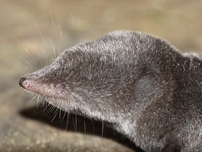top of page


Fast fact: Flying squirrels
Southern flying squirrels live in Illinois but are rarely seen because they’re nocturnal. Unlike birds, they don’t truly fly. Instead, they glide using skin flaps between their limbs to glide. They usually glide 20–30 feet but can reach up to 240 feet. Their diet includes acorns, nuts, seeds, fruits, mushrooms, insects, and bird eggs.


Fast fact: Fog
Fog is a cloud touching the ground, made of tiny water droplets in the air. In Illinois, radiation fog is most common, forming when the ground cools at night. Cold weather can bring freezing fog, while super fog forms with smoke from wildfires but is rare here. Some places like San Francisco have frequent fog because cold ocean air moves over warmer land, creating thick fog that can reduce visibility.


Fast fact: Common blue violets
The common blue violet has been Illinois’ state flower since 1908. These ankle-high, purplish-blue blooms grow in forests, prairies and even lawns with partial sun. They bloom in spring and last into summer. While not a top pick for pollinators, some bees, flies, birds and rodents do visit or feed on them. Illinois shares this state flower with New Jersey, Rhode Island and Wisconsin.


Fast fact: Northern short-trailed shrews
Northern short-tailed shrews are secretive, underground insectivores often mistaken for mice, though they aren’t rodents. They have poor vision and use echolocation to navigate. Surprisingly, they are the only venomous mammal in the U.S.—their saliva can paralyze or kill prey. They feed mostly on invertebrates but also eat small animals and some plants.


Fast fact: Chorus frogs
Boreal chorus frogs are one of the first signs of spring, often heard calling near ponds as early as February. Males sing to attract mates, and females lay up to 1,500 eggs. These small frogs, only 0.7 to 1.2 inches long, live in shallow, still waters. They are green or tan with three stripes down their backs. With short legs, they can only make small hops on land.


Fast fact: Bison
The American bison, often called a buffalo, is North America’s largest mammal. Males can weigh 2,000 pounds and stand 6 feet tall. The name “buffalo” likely came from the French word “boeuf” for beef. Native tribes had their own names, like tatanka and iinniiwa. Bison once roamed Illinois but now can be seen in places like Midewin National Tallgrass Prairie.


Fast fact: Pileated woodpeckers
Pileated woodpeckers are the largest in North America, about the size of a crow. With black bodies, white facial stripes, and bright red heads, they’re easy to spot. They live in mature forests and peck rectangular holes in trees to find carpenter ants. Their loud drilling can be heard from afar, and the holes they leave behind often become homes for smaller birds.


Fast fact: Red squirrels
Red squirrels live in northeastern Illinois and are smaller and less common than fox or gray squirrels. They are 10 to 15 inches long with orangish-red fur, white bellies and a white ring around their eyes. Their tails are shorter and less bushy. Red squirrels eat seeds, nuts and plant matter and prefer forests with pine trees, though they also live in deciduous forests.
bottom of page